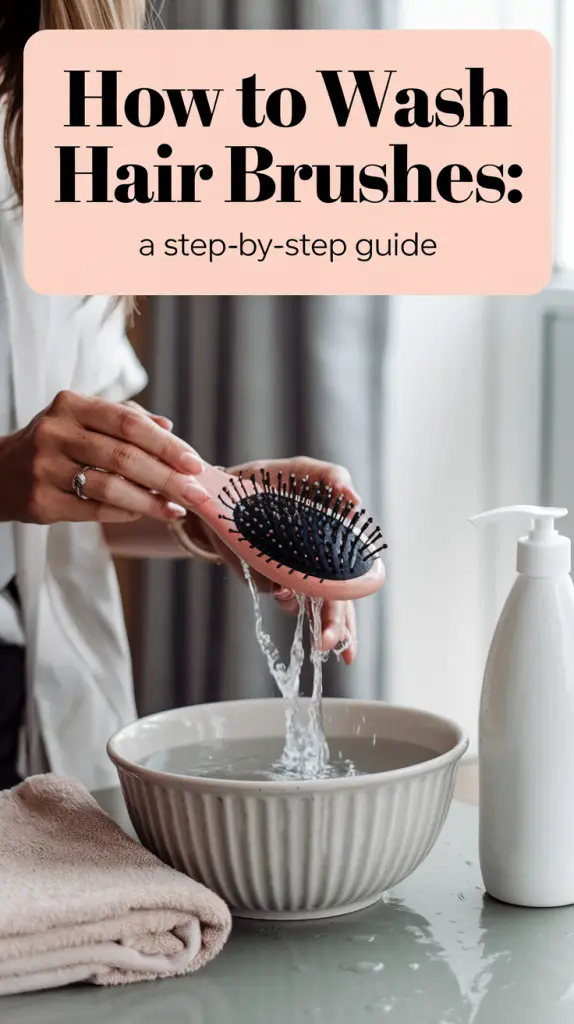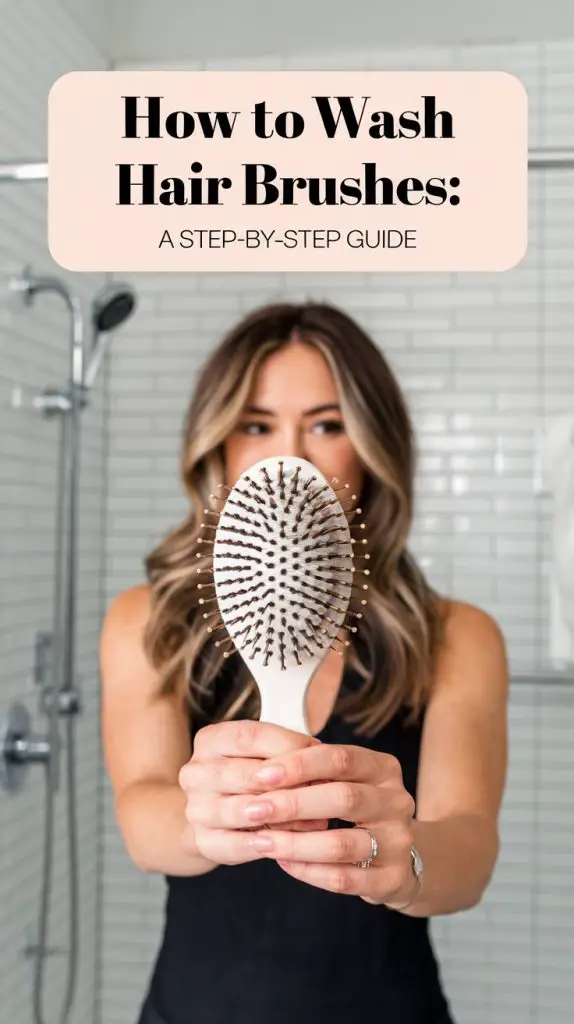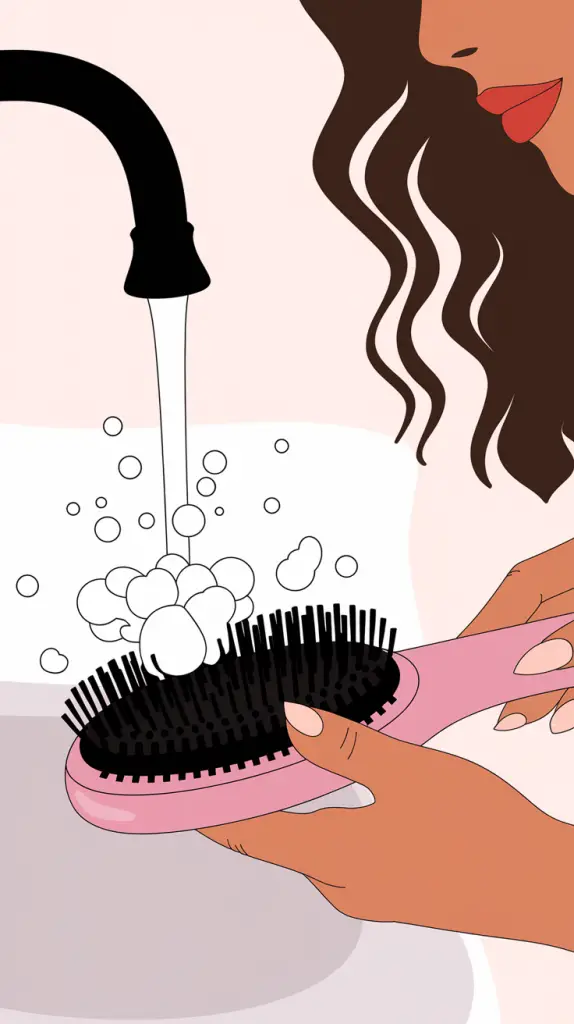How to Wash Hair Brushes: A Complete Guide
It’s important to keep your hair and scalp clean and healthy. If you don’t take care of your hairbrush regularly, it can get oily and attract all kinds of dirt, product residue, dead skin cells, and bacteria, which can end up on your hair. All right, let’s jump into our ultimate guide to cleaning your hairbrush. We’ll cover all the different types of brushes, how to clean them, and some tips on how to choose the right one for you.
Why Should You Clean Your Hairbrush?
Your hairbrush is a dust magnet, so it’s a good idea to clean it regularly. Over time, it can get clogged with hair, oils from the scalp, and swirls from styling products. A dirty brush might be the cause of these issues:
- If you’re looking for a quick fix to make your hair greasy in no time, you can always turn to oils and dirty magic.
- It can also make your scalp condition worse, which can lead to dandruff.
- It can also affect the way other hair products work, meaning you might need to wash your hair more often to get rid of the build-up.
It’s pretty obvious that you’ll improve your hair’s appearance with the help of a hairbrush if you wash it regularly. But some tools (like your cosmetics) will also become more efficient.

Step-by-Step Guide to Cleaning Different Types of Hairbrushes
There are different kinds of brushes, so each one needs a different cleaning procedure. Here’s the cleaning procedure for each type of brush to keep your face healthy and shiny.
Trouble With Tangled Hair
Just throw out the hair from the bristles, no need to wash your brush. You can use a comb, tweezers, or even your fingers to gently remove the twisted hair. If you can’t use any of the other tools, you can just use small scissors to cut the hair wrapped around the brush.
Preparing the Cleaning Solution Based on Brush Type
First things first, give the brush a good wash. Below, you’ll find instructions for cleaning the different brush types in this area.
Table 1: Cleaning Solutions for Different Brush Types
| Brush Type | Cleaning Solution | Special Instructions |
|---|---|---|
| Plastic/Synthetic Bristle | Warm water, shampoo, baking soda | Submerge bristles, scrub with toothbrush |
| Natural Bristle | Gentle shampoo, warm water | Submerge only bristles, avoid wetting wooden handle |
| Metal Bristle | Shampoo, warm water | Avoid submerging metal parts that may rust |
| Cushioned Brush | Warm water, gentle soap | Avoid soaking cushion; wipe with a damp cloth |
Scrubbing the Brush
Before you get started with the cleaning process, make sure you remove the hair from the brush and then soak it in the cleaning solution you’ve prepared. Use a toothbrush to gently rub back and forth between the bristles to remove any remaining dirt. Be sure to give the bottom of the bristles some extra attention, as this is where the heaviest deposit is usually found.
If you’re dealing with tougher stains, baking soda can also be used as an abrasive to help get rid of stubborn residue.
How to Sanitize Your Hairbrush
Once you’ve removed the dirt, you still need to sanitize your hairbrush to make sure there are no bacteria or fungi. In reality, this is a must, especially for people with conditions like dandruff or psoriasis.
Table 2: Sanitizing Methods Based on Brush Material
| Brush Type | Sanitizing Solution | Instructions |
|---|---|---|
| Plastic/Synthetic Bristle | Rubbing alcohol, water | Soak bristles for 10 minutes, then air dry |
| Natural Bristle | Vinegar, water | Wipe bristles with a vinegar solution; do not submerge |
| Metal Bristle | Rubbing alcohol, water | Soak bristles; avoid submerging metal parts |
How Often Should You Clean Your Hairbrush?
- It’s a good idea to give your clean synthetic bristle brushes a monthly clean, or even weekly if you use a lot of styling products.
- Use the brush to remove dead skin and dandruff with regular washing. It’s a good idea to give your natural bristle brushes a clean every couple of weeks or so, to stop them getting all clogged up with oil.
- Do you really need to shampoo your hair every day? Many of them add shiners to hair and highlighters to the scalp skin, which can easily be removed with a comb. If you’re not careful, you might just be shedding skin. Decide whether your scalp is dry or stressed before you get started.

Signs It’s Time to Replace Your Hairbrush
It’s important to clean the item regularly. This will help prolong the life of the hairbrush, but it’s still a good idea to replace it eventually. It’s important to keep an eye out for these signs:
- The bristles are bent or broken.
- The cushion is worn out or damaged.
- The brush isn’t as effective as it once was.
Eco-Friendly Cleaning Alternatives
If you’re environmentally conscious, here are some eco-friendly ways to clean your hairbrush:
- They are naturally free from chemicals and come from natural sources; thus, it is healthier for the environment and also safe for your brush. They are safe for daily use.
- DIY cleaner: A simple mix of one part vinegar and two parts water makes a great, inexpensive, all-natural brush cleaner.
- It’s been said that taking baking soda can help remove certain toxins that can affect the body. Baking soda is also handy for cleaning your home or beauty items. Add a few drops of water to the paste, apply it to the brushed surface, let it sit for a minute, then wipe it off with a wet cloth. You can get the rust off your pan with just water and vinegar.
Travel-Friendly Hairbrush Cleaning Tips
To keep your hairbrush clean and tidy when you’re on the go, it’s important to do regular maintenance. Here are a few tips that you might find useful:
- It’s always a good idea to bring a small brush for quick hair removal.
- Portable Hand Sanitizer: It’s a good idea to pack these travel-sized products when you’re on the go for a while or keep them in your car for easy access. Hand sanitizer spray is a great compact option to have in your bag or pocket.
FAQs
Q1: Can I use dish soap to clean my hairbrush?
Yes, dish soap works great on cutting through oils and product residue, especially on a plastic bristle brush. However, it might be too strong-flavored for natural brushes. So, it’s best to use the latter for a soft shampoo without any other ingredients.
Q2: How do I clean a wooden brush wihout damaging it?
Just a heads-up: Don’t run the wooden handle over water. Instead, give the brush bristles a quick wash with a toothbrush dipped in a mixture of soapy water, and make sure you keep the handle in direct contact with the water.
Q3: How do I sanitize my hairbrush?
Once you’ve brushed, just pop your comb into a mix of rubbing alcohol and water and leave it to clean itself. This step is important because it can help to distract any bacteria that might be present.
Q4: How do I clean hairbrushes with a cushioned base?
Just a heads-up: Don’t put the cushion in water. As an alternative, you can use a toothbrush dipped in soapy water to clean the bristles and cushion. Then just turn it over and let it dry bristle-side down.
Q5: What should I do if my brush has lint stuck in it?
Lint can come from towels or the environment. You can use your tweezers or toothbrush to gently remove it, and you can still minimize it with regular cleaning.
Conclusion
Cleaning your hairbrush regularly is a simple way to keep your hair shiny and your scalp young. The cleaning methods for different types of brushes may vary, but the steps are pretty straightforward and really helpful. So, when you see a clump of hair or build-up on your brush next time, don’t ignore it. Just spend 5-6 minutes and clean it completely. I’m sure you’ll feel that your hair care routine has improved a lot.


